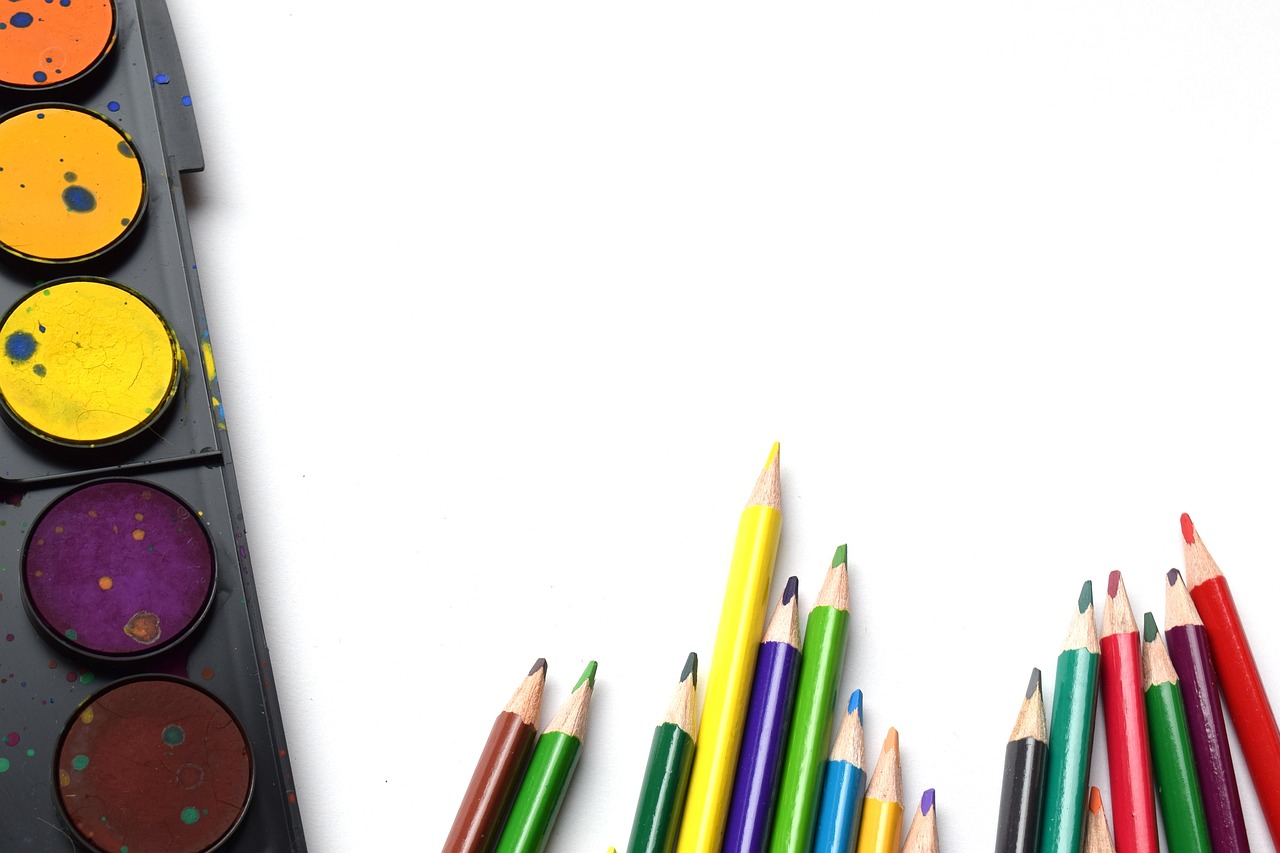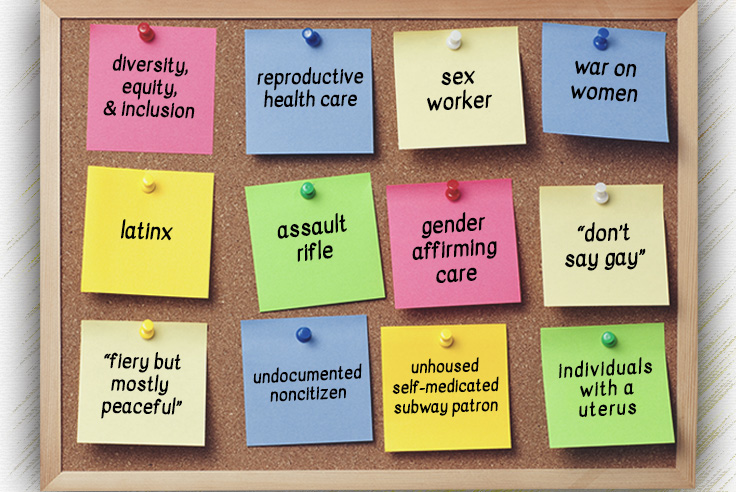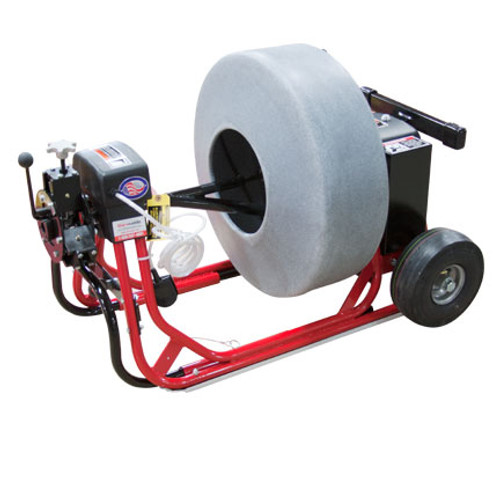Table of Contents
Scrapbooking is a creative and fulfilling hobby, but it can quickly become overwhelming if your workspace is cluttered and disorganized. A well-organized scrapbooking area not only enhances your crafting experience but also allows you to work efficiently and find inspiration easily. In this article, we’ll explore essential tips and strategies to help you maintain a clutter-free and organized scrapbooking workspace.
Scrapbooking is indeed a wonderful way to unleash your creativity and preserve cherished memories, but maintaining an organized workspace is crucial to fully enjoy this fulfilling hobby. A cluttered and disorganized area can stifle your creativity, lead to frustration and make the process of crafting less enjoyable. Let’s delve deeper into some essential tips and strategies for creating and maintaining an organized scrapbooking workspace.
Dedicate a Designated Space: First and foremost, designate a specific area in your home for your scrapbooking endeavors. Having a dedicated space allows you to leave your work partially completed without disrupting other aspects of your life. It’s also a visual reminder of your creative outlet.
Invest in Storage Solutions: Invest in a variety of storage solutions such as shelves, cabinets, drawers and clear plastic containers. These will help you keep your supplies neatly organized and easily accessible. Consider using transparent containers to see the contents at a glance.
Sort and Categorize: Sort your supplies into categories, such as paper, embellishments, adhesives and tools. Within each category, further subdivide items based on themes or colors. Labeling containers or drawers is an excellent way to maintain order.
Keep Frequently Used Items Handy: Arrange your workspace so that frequently used tools and materials are within arm’s reach. This ensures that you can work efficiently without constantly searching for what you need.
Create a Workspace Flow: Organize your workspace in a way that follows a logical workflow. Start with a clear surface for planning and sketching, followed by easy access to your supplies and tools and end with a space for assembling your scrapbook pages.
Utilize Vertical Space: Maximize your workspace by utilizing vertical storage. Install shelves, pegboards or wall-mounted organizers to keep items off your work surface, leaving more room for creativity.
Regularly Declutter: Set aside time periodically to declutter your supplies. Discard or donate items you no longer use and keep only those that truly inspire you. Over time, this will help maintain a clutter-free space.
Keep a Work-in-Progress System: Create a system for managing ongoing projects. Use labeled folders or trays to keep layouts and materials for current projects organized and easily accessible.
Digital Organization: If you incorporate digital elements into your scrapbooking, organize your digital files in a structured manner. Use clear file names and folders to make it easy to locate digital assets when needed.
Inspiration Board: Maintain an inspiration board or wall near your workspace. Pin photos, sketches and quotes that inspire your scrapbooking projects. It can serve as a creative catalyst during moments of creative block.
Regular Cleaning Routine: Incorporate regular cleaning into your scrapbooking routine. A quick tidying up at the end of each crafting session can prevent clutter from accumulating.
Involve Your Creative Space in the Décor: Make your scrapbooking area an extension of your creative spirit by decorating it with artwork, inspirational quotes or personal touches. A pleasing and inviting workspace can boost your motivation and creativity.
By following these tips and strategies, you can transform your scrapbooking area into an organized and inspiring sanctuary where you can craft to your heart’s content. An organized workspace not only enhances your crafting experience but also allows your creativity to flourish, making your scrapbooking hobby even more fulfilling.
For a comprehensive look at this subject, we invite you to read more on this dedicated page: 11 Beautiful Home Offices That Are Neat and Organized
Assess Your Supplies
The first step in organizing your scrapbooking supplies is to take stock of what you have. Empty your drawers, shelves and storage containers and spread out all your materials. This process helps you see what you own, identify duplicates and evaluate the condition of your supplies.
Taking stock of your scrapbooking supplies is the foundational step to creating an organized and efficient crafting space. It not only helps you assess the scope of your materials but also sets the stage for effective organization and creative inspiration. Let’s delve deeper into why this process is crucial and how to make the most of it:
Visibility and Accessibility: Emptying your drawers, shelves and storage containers allows you to see all your supplies at once. This newfound visibility ensures that nothing is hidden or forgotten, making it easier to locate and access the materials you need when working on a project.
Duplicates and Excess: As you spread out your materials, you’ll likely come across duplicates or excess items. Identifying these duplicates not only helps declutter your space but also saves you money in the long run. You can set aside extra supplies for future projects or consider sharing them with fellow crafters.
Inventory and Condition: Taking stock provides an opportunity to assess the condition of your supplies. Check for any damaged or deteriorating items that may need replacement. This proactive approach ensures that your materials remain in good shape, ready for your creative endeavors.
Inspiration and Planning: Examining your entire collection of supplies can be an inspiring process. It may spark ideas for future projects or remind you of materials you’ve wanted to use but haven’t yet. This can guide your creative planning and encourage you to explore new techniques and designs.
To make the most of your organization process:
Sort and Categorize: As you spread out your supplies, sort them into categories. Common categories may include papers, embellishments, tools, adhesives and storage solutions. This categorization lays the foundation for efficient organization.
Declutter Thoughtfully: When identifying duplicates or items you no longer need, consider whether they can be repurposed or donated. Crafting materials can often find new life in the hands of others, so don’t be too hasty to discard them.
Evaluate Storage Solutions: Take note of the storage solutions you currently use. Determine whether they are effective or if you need to invest in better storage options. Proper storage not only keeps your supplies organized but also prolongs their lifespan.
Create an Inventory List: Consider creating a digital or physical inventory list of your supplies. This can be a handy reference when you’re planning projects or shopping for new materials. It also helps you keep track of items that may need replenishing.
Set Creative Goals: As you review your materials, set creative goals and intentions. What types of projects do you want to create with your supplies? What techniques or skills do you want to explore? These goals can guide your crafting journey.
Taking stock of your scrapbooking supplies is more than just an organizational task; it’s a creative journey that allows you to connect with your materials, find inspiration and set the stage for productive and enjoyable crafting sessions. By starting with a well-organized and decluttered space, you’ll be better equipped to bring your creative visions to life.
To expand your knowledge on this subject, make sure to read on at this location: 40 Genius Desk Organization Ideas to Maximize Home Offices

Sort and Categorize
Once you’ve assessed your supplies, sort them into categories. Common categories include papers, embellishments, adhesives, tools, stamps and inks. Create separate piles or containers for each category to keep similar items together.
Sorting your crafting supplies into well-defined categories is not just a practical step; it’s a key to creating an organized and efficient crafting space. Once you’ve assessed your supplies and gathered them all in one place, it’s time to embark on the sorting process. Common categories like papers, embellishments, adhesives, tools, stamps and inks can be your guiding stars as you navigate the sea of crafting materials.
Begin by creating separate piles or containers for each category. This initial step is like creating a roadmap for your crafting journey. It helps you visualize the different zones of your crafting space and allocate dedicated storage for each category. For example, designate a drawer for papers, a shelf for tools, a box for embellishments and so on. Having a clear and designated space for each category not only keeps your supplies organized but also streamlines your creative process.
Sorting your supplies also offers an opportunity for discovery. As you sift through your materials, you may stumble upon forgotten treasures or find new ways to combine items creatively. This process of exploration can spark fresh ideas for your projects and rekindle your passion for crafting.
Moreover, categorizing your supplies makes them easily accessible. When you know where to find specific items, you can dive into your creative process without wasting time searching for that elusive stamp or the perfect shade of ink. Efficiency is a valuable asset in crafting, allowing you to focus on the joy of creating rather than the frustration of rummaging through clutter.
Consider the flow of your creative process. Arrange your categories in a way that aligns with how you typically work on projects. For instance, keep your adhesives and basic tools within arm’s reach of your crafting table for easy access during the assembly stage. Papers and embellishments can be stored nearby to inspire your design process.
Lastly, don’t forget to label your containers or storage spaces. Clear and concise labeling ensures that you and anyone else using your crafting supplies can quickly identify where each category is located. Labeling adds the finishing touch to your organization system, making it easy to maintain over time.
In conclusion, sorting your crafting supplies into categories is a foundational step in creating an organized and efficient creative space. It sets the stage for smoother crafting sessions, sparks creativity and ensures that you can find what you need when inspiration strikes. So, roll up your sleeves, embrace the art of categorization and transform your crafting space into a haven of creativity and organization.
You can also read more about this here: Scrapbooking, Cardmaking & Craft Room Organization –

Purge Unwanted Items
As you sort through your supplies, be ruthless in purging items you no longer need or use. Donate or sell duplicates, damaged materials or supplies that no longer align with your style or interests. This step reduces clutter and frees up space for essentials.
Sorting through your supplies and decluttering your crafting space is not just a practical task; it’s a liberating and transformative process. It can breathe new life into your creative journey and revitalize your enthusiasm for scrapbooking. Here’s why being ruthless in purging and organizing is so beneficial:
1. Streamlined Creativity: A cluttered workspace can stifle creativity. When you’re surrounded by excess materials and items you no longer use, it can be overwhelming and distracting. By clearing away the unnecessary, you create a clean canvas that allows your creative ideas to flow more freely.
2. Enhanced Focus: With fewer distractions, you can focus more on the creative aspects of scrapbooking rather than sifting through clutter. You’ll spend less time searching for supplies and more time crafting meaningful layouts that capture your memories beautifully.
3. Rediscover Forgotten Gems: As you go through your supplies, you might stumble upon forgotten treasures. Items you had set aside or overlooked could suddenly inspire new projects or breathe fresh life into your current ones. Decluttering can be like uncovering a hidden craft store in your own space.
4. Reconnect with Your Style: Your crafting style may evolve over time and some materials may no longer align with your current preferences. Purging these supplies not only clears physical space but also helps you reconnect with your authentic style. It’s a chance to refine your creative identity.
5. Efficient Shopping: When your supplies are organized, you’ll have a better sense of what you already own. This prevents unnecessary purchases of duplicates and helps you make more informed decisions when adding new materials to your collection.
6. Reduce Stress: A clutter-free workspace is not only more conducive to creativity but also reduces stress. It creates a tranquil and inviting atmosphere where you can fully immerse yourself in your craft without the weight of disorder looming overhead.
7. Share and Give Back: Items you no longer need can find new life in the hands of others. Consider donating or selling duplicate or gently used materials to fellow crafters or charitable organizations. It’s a way to give back to the creative community and make space for fresh inspiration.
8. Sustainability: Reducing clutter aligns with sustainability principles by minimizing waste. Instead of hoarding materials that may never get used, you’re making conscious choices about what truly adds value to your crafting experience.
9. Renewed Motivation: A decluttered space can reignite your motivation to scrapbook. It’s like starting with a clean slate and the sense of order and purpose can be incredibly motivating.
Remember that decluttering is not a one-time task; it’s an ongoing process. Regularly assess your supplies and keep them organized to maintain a clutter-free space. By doing so, you’ll not only enjoy a more efficient and inspired crafting experience but also create scrapbook layouts that truly reflect your passion and creativity.
Explore this link for a more extensive examination of the topic: MY TIPS + TRICKS FOR PURGING + ORGANIZING YOUR HOME …

Invest in Storage Solutions
Investing in the right storage solutions is essential for an organized scrapbooking workspace. Consider clear plastic containers, drawers, shelves and storage units specifically designed for craft supplies. Transparent containers allow you to easily see what’s inside, while labeled bins or dividers can help you keep track of your categories.
“Efficiently organizing your scrapbooking workspace is crucial for a smooth creative process. Opt for clear plastic containers, drawers, shelves and purpose-built storage units for your craft supplies. Clear containers offer visibility and labels or dividers ensure a systematic categorization, streamlining your workflow and boosting productivity.”
Should you desire more in-depth information, it’s available for your perusal on this page: 40 Genius Desk Organization Ideas to Maximize Home Offices

Label Everything
Labeling is key to maintaining an organized workspace. Label your storage containers, drawers and shelves with the names of the categories or contents. This ensures that you can quickly locate and return items to their designated spots.
Expanding on the importance of labeling and its role in workspace organization:
Enhanced Accessibility: Labels not only help you quickly locate items but also enhance accessibility. When you label your storage containers, drawers and shelves, you create a visual roadmap of your crafting supplies. This means that whether you’re working on a specific project or simply looking for a particular tool, you can navigate your workspace with ease. Labels eliminate the frustration of rummaging through drawers or bins, ultimately saving you valuable crafting time.
Efficient Workflow: Crafting often involves a sequence of tasks, from selecting materials to assembling layouts. Labels can contribute to a more efficient workflow. For example, when your paper bins are labeled “Patterned Paper,” “Cardstock,” and “Specialty Paper,” you can seamlessly move between these categories as your project requires. This not only streamlines your creative process but also keeps distractions to a minimum, allowing you to stay focused on the task at hand.
Preventing Misplacement: Without proper labeling, items can easily be misplaced or forgotten. This can lead to frustration and time wasted searching for supplies. Labels act as visual reminders of where each item belongs, reducing the likelihood of misplacement. As you work, the habit of returning items to their designated spots becomes second nature, preventing clutter from accumulating and ensuring that your workspace remains tidy.
Inspiration and Creativity: Labels can also play a role in sparking inspiration and creativity. Consider labeling bins or shelves with thematic or project-related names, such as “Travel Memories” or “Birthday Bash.” These labels not only help you quickly gather materials for a specific project but also serve as prompts for creative ideas. When you see a labeled container filled with items related to a particular theme, it can trigger ideas for future layouts or projects, fostering a continuous flow of creativity.
Adaptability: Labels are not static; they can evolve with your craft. As your scrapbooking interests and supplies change over time, labels can be updated to reflect your current needs. This adaptability ensures that your workspace remains organized and aligned with your creative journey.
In summary, labeling is a fundamental aspect of maintaining an organized scrapbooking workspace. It goes beyond mere categorization; it enhances accessibility, streamlines workflow, prevents misplacement, inspires creativity and adapts to your evolving crafting interests. By embracing labeling as an integral part of your organization strategy, you create a workspace where efficiency and creativity harmoniously coexist, making your scrapbooking experience all the more enjoyable.
For additional details, consider exploring the related content available here Talented Kitchen 212 Pack School & Office Labels For Storage Bins …

Utilize Vertical Space
Make the most of your workspace by utilizing vertical storage. Install shelves, pegboards or wall-mounted organizers to keep frequently used tools and supplies within arm’s reach. This not only maximizes space but also keeps your workspace tidy.
Creating an efficient and well-organized workspace is a game-changer for any creative endeavor, including scrapbooking. Vertical storage is a secret weapon that not only maximizes your space but also enhances your workflow. Here’s how to make the most of it:
1. Embrace Vertical Shelving: Installing shelves on your crafting room’s walls is like adding extra square footage to your space. It’s the perfect solution for keeping frequently used supplies at your fingertips. Reserve the lower shelves for heavier items like paper stacks or albums and place lighter, frequently used tools and embellishments on higher shelves.
2. Pegboards for Versatility: Pegboards are a versatile and customizable option. They allow you to hang your tools, scissors, ribbons and even small storage containers neatly. With hooks and pegs of varying sizes, you can arrange and rearrange your supplies as needed, ensuring that everything is easily accessible.
3. Wall-Mounted Organizers: Wall-mounted organizers come in various forms, from grids with baskets to pockets and cubbies. These can be particularly handy for sorting and storing items like stickers, washi tape, stamps and markers. The clear advantage is that you can see everything at a glance, saving you time searching through drawers or bins.
4. Magnetic Magic: Magnetic boards or strips are a clever way to keep metal tools like scissors, dies and paper clips within reach. Mount a magnetic strip on your wall or use magnetic containers to store smaller items. It’s a tidy and visually appealing way to showcase your tools.
5. Utilize Unused Spaces: Don’t neglect those awkward or unused spaces in your crafting room. Consider mounting shelves above doors or using the back of closet doors for additional storage. Every nook and cranny can become a haven for your supplies.
6. Label Everything: Once you’ve set up your vertical storage, make it even more efficient by labeling containers and shelves. This not only keeps everything organized but also ensures that you can easily find what you need when you need it.
7. Rotate Seasonal Supplies: If your crafting projects vary by season (e.g., holiday cards or summer-themed layouts), use your vertical storage to rotate supplies accordingly. Keep the current season’s materials accessible while storing the rest out of sight but within easy reach for when they’re needed.
8. Create a Visual Display: Vertical storage can double as an aesthetic display. Use colorful containers, baskets or decorative boxes to add a touch of visual appeal to your workspace. It’s a practical and stylish way to keep your supplies organized.
9. Stay Flexible: Remember that your crafting needs may evolve over time. Stay flexible with your vertical storage solutions and be willing to adapt and change as your creative process and supply inventory change.
By making the most of your vertical storage, you’ll not only maximize your workspace but also create an organized and efficient crafting area. This will enhance your scrapbooking experience, allowing you to focus on your creative projects rather than searching for supplies. A well-organized space is a canvas for your creativity and with vertical storage, you can ensure that everything you need is right where you want it.
If you’d like to dive deeper into this subject, there’s more to discover on this page: Craft Room Ideas: 10 Ways To Create A Practical Yet Stylish Space …

Create Work Zones
Organize your workspace into distinct work zones. Have a designated area for cutting and trimming, another for assembling layouts and a separate space for storing your supplies. This division of labor streamlines your creative process and prevents clutter from spreading.
Creating a well-organized scrapbooking workspace with distinct work zones is akin to setting the stage for a seamless and enjoyable creative journey. It’s a practice that not only enhances efficiency but also fosters an environment where your creativity can flourish. Let’s delve deeper into the benefits and tips for organizing your scrapbooking workspace into these distinct work zones:
Cutting and Trimming Zone: This is your precision hub, where you bring order to your photos, papers and materials. Having a dedicated cutting and trimming area ensures that you have the space and tools necessary for precise work. Here’s how to make the most of this zone:
- Efficient Tools: Equip this zone with high-quality paper trimmers, scissors and cutting mats. Ensure that everything is easily accessible to streamline the process.
- Clear Work Surface: Maintain a clear and clutter-free work surface for accurate measurements and clean cuts.
- Organized Storage: Store your cutting tools, rulers and extra blades nearby in an organized manner for quick access.
Layout Assembly Zone: This is where your scrapbook pages come to life. It’s the creative heart of your workspace, where you arrange photos, embellishments and journaling. Organize this zone to foster your artistic flow:
- Comfortable Seating: Ensure that you have a comfortable chair or workspace where you can sit and craft comfortably for extended periods.
- Workspace Flexibility: Create a versatile workspace that can accommodate different page sizes and layouts. Consider a large table or desk to spread out your materials.
- Easy-to-Reach Supplies: Keep frequently used supplies, like adhesive, embellishments and pens, within arm’s reach to prevent interruptions in your creative process.
- Inspiring Decor: Personalize this zone with artwork, motivational quotes or other elements that inspire your creativity.
Supply Storage Zone: This area is the backbone of your organization, keeping your materials readily accessible and well-maintained. Efficient supply storage ensures you can locate what you need when you need it:
- Shelving or Storage Units: Invest in shelving, drawers or clear plastic containers to neatly organize and store your papers, embellishments, stamps and tools.
- Labeling: Label each storage container or drawer to easily identify and retrieve supplies. This minimizes time spent searching for specific items.
- Regular Inventory: Periodically assess and declutter your supplies to keep the space efficient and prevent overcrowding.
Waste Management: Don’t forget to include a designated area for waste disposal, such as a trash bin and a recycling bin. This keeps your workspace clean and encourages responsible disposal of scraps and discarded materials.
Organization Tools: Consider using organization tools like pegboards, wall-mounted shelves or storage carts to maximize space and keep your work zones tidy.
By establishing these well-defined work zones, you not only streamline your creative process but also create a workspace that nurtures your passion for scrapbooking. It’s a place where the chaos of clutter is replaced by the harmony of creativity, allowing you to focus on what truly matters—crafting beautiful scrapbook pages and preserving your cherished memories with joy and ease.
To expand your knowledge on this subject, make sure to read on at this location: 40 Genius Desk Organization Ideas to Maximize Home Offices

Implement a Use-and-Return System
Adopt a “use-and-return” system to prevent clutter from accumulating as you work. After using a tool or supply, return it to its designated spot immediately. This habit keeps your workspace tidy and saves you time searching for materials later.
Adopt a “use-and-return” system to prevent clutter from accumulating as you work. After using a tool or supply, return it to its designated spot immediately. This habit keeps your workspace tidy and saves you time searching for materials later.
Efficiency and Flow: The “use-and-return” system is like a well-orchestrated symphony for your workspace. Just as musicians return their instruments to their stands between movements, you’re ensuring that each tool or supply finds its way back to its proper place. This seamless flow allows you to maintain a steady rhythm in your creative process. You won’t waste valuable time rummaging through cluttered drawers or tables searching for that one elusive item.
Creative Focus: Clutter can be a distraction that hampers your creative flow. When your workspace is clutter-free, your mind is free to focus on the task at hand. You can channel your energy and imagination into your scrapbooking projects rather than being sidetracked by disorganization. It’s easier to maintain a state of “creative flow” when you’re not constantly battling a chaotic environment.
Material Preservation: Properly storing and returning your tools and supplies is an act of care for your creative arsenal. It ensures that your materials remain in good condition, free from damage or wear. Tools that are left lying around may be subject to accidents or spills and supplies can deteriorate faster when exposed to dust or moisture. By respecting your materials, you prolong their lifespan and maintain their quality.
Visual Aesthetics: A tidy workspace not only fosters efficiency but also adds to the visual appeal of your creative area. A clean and organized workspace can be inspiring and uplifting. It’s a canvas waiting for your creativity to paint upon. Plus, when everything has a designated spot, you can take pride in your setup, knowing that it’s optimized for your creative pursuits.
Stress Reduction: A cluttered workspace can contribute to feelings of stress and overwhelm. On the other hand, an organized and clutter-free environment can have a calming effect on your mind. It allows you to approach your scrapbooking projects with a sense of tranquility and order, enhancing your overall well-being.
Sustainability: The “use-and-return” system aligns with sustainable practices. By taking care of your tools and supplies, you reduce the need for replacements, which can lead to less waste and a smaller environmental footprint. It’s a small yet meaningful contribution to a more eco-friendly crafting process.
Inspired Creativity: When your workspace is tidy and well-organized, it becomes an inviting and inspiring place to create. It sets the stage for creativity to flourish and it’s easier to generate new ideas and experiment with different techniques when your tools are readily available and in good condition.
Incorporating the “use-and-return” system into your scrapbooking routine isn’t just about tidiness; it’s about creating an environment that nurtures your creativity and supports your crafting journey. It’s a simple yet powerful practice that can make your creative process more efficient, enjoyable and productive. So, embrace this habit and watch as your scrapbooking workspace transforms into a space where your ideas and memories come to life with ease and joy.
Additionally, you can find further information on this topic by visiting this page: 10 Steps to an Organized Home Office | Home Office Organization …

Regularly Declutter
Maintaining an organized workspace is an ongoing process. Schedule regular decluttering sessions to assess your supplies, reevaluate your needs and make adjustments as your craft evolves. Seasonal or quarterly cleanups can help keep your workspace clutter-free.
Maintaining an organized workspace is an ongoing process that can significantly impact your productivity and creativity. It’s not just a one-time effort but a commitment to orderliness that pays dividends in the long run. To ensure your workspace remains a conducive environment for your craft, consider extending this idea further:
Commit to Consistency: Regularity is key to keeping your workspace organized. Establish a schedule that works for you, whether it’s weekly, bi-weekly or monthly decluttering sessions. Consistency will prevent clutter from piling up and becoming overwhelming.
Assess and Reevaluate: During your decluttering sessions, take the time to assess your supplies and tools. Ask yourself if you’re still using everything on hand. As your skills and projects evolve, your needs may change. Don’t hesitate to let go of items that are no longer essential or relevant to your craft.
Streamline Your Workflow: Use these sessions as an opportunity to optimize your workspace layout. Reorganize your tools and materials based on frequency of use, making sure that frequently used items are easily accessible. This can streamline your workflow and save you precious time during your creative process.
Inventory Management: Maintain an inventory of your supplies. Keep a list of what you have and what you need to replenish. This will help you avoid over-purchasing or forgetting essential items, ultimately saving you money and time.
Seasonal Deep Clean: In addition to regular sessions, consider implementing seasonal or quarterly deep cleanups. These can be more comprehensive and involve cleaning not only your workspace but also your tools and equipment. It’s a chance to refresh and reset your creative environment.
Inspire Creativity: An organized workspace isn’t just about tidiness; it can also inspire your creativity. Consider adding elements like inspirational quotes, artwork or a vision board to keep you motivated and focused on your craft.
Digital Organization: Don’t forget about the digital aspect of your workspace. Organize your digital files and projects just as meticulously as your physical space. A well-structured digital environment can save you from the frustration of searching for important documents or project files.
Maintenance Mindset: Cultivate a mindset of maintenance rather than just cleaning up when things get chaotic. By consistently maintaining your organized workspace, you’ll find that it becomes a natural part of your creative process.
Remember, an organized workspace isn’t just about aesthetics; it’s a powerful tool for enhancing your craft and boosting your overall efficiency. As your craft evolves, so too should your workspace, adapting to your changing needs and inspiring your ongoing creative journey.
To expand your knowledge on this subject, make sure to read on at this location: How to Organize Your Craft Room – Craft-Mart

Seek Inspiration
Incorporate elements of inspiration into your workspace. Display your favorite scrapbook layouts, use a vision board or hang inspiring quotes or artwork on the walls. A visually appealing workspace can boost your creativity and motivation.
Creating an inspiring workspace is like sowing the seeds of creativity and motivation, ensuring that your scrapbooking endeavors flourish and thrive. It’s the place where imagination takes flight, where memories come to life and where your artistic spirit finds its fullest expression. Here’s why incorporating elements of inspiration into your workspace is not just a design choice but an essential component of your creative journey:
Visual Stimulus: Your workspace sets the stage for your creative process. By displaying your favorite scrapbook layouts, you surround yourself with visual stimulus that sparks fresh ideas and design inspiration. These layouts serve as reminders of your past achievements and the creative potential that lies ahead.
A Vision of Possibilities: A vision board in your workspace is like a roadmap for your creative aspirations. It’s a collage of images, words and ideas that represent your goals and dreams in scrapbooking. Whenever you glance at your vision board, you’re reminded of the possibilities and the direction you want your artistry to take.
Mood Elevation: Hanging inspiring quotes or artwork on the walls of your workspace has a mood-elevating effect. These words of wisdom and visual delights can uplift your spirits, instilling positivity and motivation. They serve as constant companions on your creative journey, encouraging you to persevere and explore new horizons.
Personal Connection: Your workspace is a reflection of your personality and artistic preferences. By incorporating elements that resonate with you, you create a space that feels uniquely your own. This personal connection to your workspace fosters a sense of ownership and comfort, making it a place where creativity naturally flows.
Creative Energy Flow: A visually appealing workspace is conducive to the flow of creative energy. It’s like a wellspring of inspiration where ideas bubble up effortlessly. This positive energy encourages you to dive into your projects, experiment with new techniques and embrace the joy of artistic exploration.
Motivation and Focus: The elements of inspiration in your workspace act as motivational anchors. They remind you of the purpose and passion behind your scrapbooking endeavors. When faced with creative blocks or challenges, a glance at your inspiring elements can refocus your attention and reignite your determination.
A Sanctuary of Creativity: Your workspace becomes a sanctuary of creativity, a place where the outside world fades away and you can fully immerse yourself in your artistic pursuits. It’s a haven where time seems to stand still as you pour your heart and soul into your scrapbooking projects.
Productivity and Efficiency: An inspiring workspace can enhance your productivity and efficiency. It’s a space where you’re naturally drawn to work and where you can organize your supplies and materials for easy access. This streamlined setup minimizes distractions and maximizes your creative output.
Sustained Motivation: Inspiration is not a one-time occurrence; it’s an ongoing process. By curating your workspace with elements that inspire you, you create an environment that sustains your motivation over the long term. It’s a space that keeps you excited and engaged in your creative pursuits.
In conclusion, your workspace is more than just a physical location; it’s a sanctuary of creativity, a source of inspiration and a reflection of your artistic spirit. By incorporating elements of inspiration, you infuse your workspace with the energy and motivation needed to embark on countless scrapbooking journeys. So, adorn your creative haven with the elements that speak to your heart and watch as your scrapbooking endeavors flourish with renewed passion and purpose.
Should you desire more in-depth information, it’s available for your perusal on this page: 5 Tips for a Clutter Free Craft Space

An organized scrapbooking workspace is the key to an enjoyable and productive crafting experience. By assessing your supplies, sorting and categorizing, investing in storage solutions and maintaining a clutter-free environment, you create a space where creativity can flourish. With these tips, you can turn your scrapbooking area into a well-organized haven where you can craft with ease, find inspiration effortlessly and preserve your cherished memories beautifully.
Creating an organized scrapbooking workspace isn’t just about tidiness; it’s about fostering an environment where your creativity can thrive and where every crafting session is a joyous journey into memory preservation. Let’s dive deeper into the transformative power of an organized scrapbooking haven:
1. Supplies Assessment: Start by taking stock of your scrapbooking supplies. This step helps you identify what you have, what you need and what might be surplus. It’s an opportunity to declutter by letting go of items you no longer use or that don’t align with your current crafting style. An organized workspace begins with a streamlined collection of materials.
2. The Art of Sorting: Sorting and categorizing your supplies is akin to creating a visual library. Group similar items together, whether it’s paper, stickers, stamps or embellishments. This systematization not only makes it easier to find what you need but also sparks inspiration as you see your resources at a glance.
3. Storage Solutions: Investing in appropriate storage solutions is a game-changer. Consider transparent containers or bins for easy visibility. Drawer organizers, shelving units and wall-mounted storage can help maximize your space. Labeling each storage compartment ensures that everything has its designated place, making cleanup a breeze.
4. Clutter-Free Zone: A clutter-free workspace is an open invitation to creativity. Make it a habit to tidy up after each crafting session, putting supplies back where they belong. An uncluttered surface gives you room to spread out your projects and work with ease, minimizing distractions.
5. Ergonomics Matter: Pay attention to ergonomics. Ensure your chair, table and lighting are comfortable and conducive to long crafting sessions. Adequate lighting is especially crucial for preserving your eyesight and maintaining focus on the intricate details of your scrapbooking.
6. Inspiring Display: Incorporate an inspiring display in your workspace. Hang up finished scrapbook layouts or frame favorite photographs. Surrounding yourself with completed projects and cherished memories fuels your creative spirit and reminds you of the beauty you’ve already created.
7. Creative Zones: Consider dividing your workspace into creative zones. Dedicate specific areas for cutting and adhering, journaling and designing layouts. Having designated zones streamlines your workflow and keeps you organized during the crafting process.
8. Regular Maintenance: Maintain your organized workspace with regular check-ins. Periodically review your supplies to ensure they align with your current crafting interests. As your skills and preferences evolve, your supplies may need to evolve with you. Keeping a well-organized space is an ongoing commitment.
9. Personal Touch: Infuse your workspace with personal touches that inspire you. Decorate the area with items that spark joy, whether it’s artwork, motivational quotes or photographs of loved ones. Your workspace should reflect your unique creative personality.
10. Creativity Unleashed: With an organized scrapbooking workspace, you unlock the full potential of your creativity. It becomes a haven where ideas flow freely, where every crafting session is a joyous exploration and where your cherished memories are lovingly brought to life. It’s not just a workspace; it’s a sanctuary of self-expression and creativity.
In conclusion, an organized scrapbooking workspace is the heart of your creative journey. It’s a space where you can seamlessly transform your treasured memories into beautifully crafted keepsakes. By assessing, sorting, investing in storage solutions and maintaining a clutter-free environment, you create a nurturing space where your imagination knows no bounds. Here, every layout becomes a work of art, every moment a cherished memory and every crafting session a delightful adventure in creativity.
For additional details, consider exploring the related content available here 11 Beautiful Home Offices That Are Neat and Organized
More links
Should you desire more in-depth information, it’s available for your perusal on this page: 40 Genius Desk Organization Ideas to Maximize Home Offices
